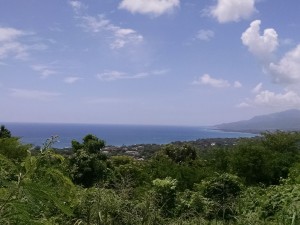Jamaican Sustainable Farm Enterprise Program at the Source Farm Sponsored by Volunteers for Economic Growth Alliance (VEGA). Florida Association for Voluntary Action in the Caribbean and the Americas (FAVCA) & US AID
I was tickled recently to be accepted into a development program in Jamaica partly facilitated by friends and mentors Chuck Marsh and Tony Kleese. Both of these men are good friends to Frank Cook who is the main inspiration for PHI as well. You can see a distillation of my after action report below and a description of the project at the links above.
Executive Summary

My trip to Jamaica proved to be very productive! Major accomplishments included generation of an ethnobotanical survey including over 100 species of plants located at the Source farm as well as an ethnobotanical checklist for plants of Jamaica more generally featuring over 300 species. Nine books covering various aspects of ethnobotany were deposited in the Source farm library and are cited following (Adams, 1971; Austin & Thomas, 2009; Elpel, 2013; Henry, 2002; Honychurch, 1986; Katz & Morell, 2016; Morton & Zallinger, 1976; Storer, 1964; Wardowski, 1998).
Eight additional copies of the book by Austin and Thomas just cited were distributed among local people. One day long class on botany, wild edible plants, medicinal plants and food as medicine was administrated as well as a day long class on fermentation. Outreach and contact was made with botanist Keron Campbell at the Natural History Museum of Jamaica, Norman Wright of Sipacupa/Tops tea company and Dr. David Picking at the University of the West Indies. A suggested reading list for the ethnobotany of the Caribbean was generated with over 100 resources cited and a digital library was shared as well.
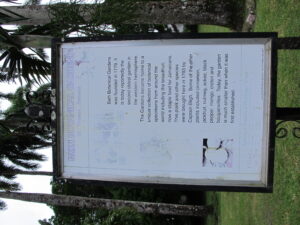
i visited two of the national botanical gardens in Bath and Castleton. Products created by former fellow volunteers Chip Hope and Oliver Moore were observed and employed including salves and turmeric/ginger vinegar. It was also nice to take note of trees grafted by Oliver.
Future recommendations include the continuance of the botanical survey, fleshing out of the ethnobotanical checklist and the labeling of major plants. The development of an ethnobotanical guide book “Plants of the Source” and other associated publications, represents another opportunity. A plan to manage invasive plants would be desirable. It would also be great for the Source farm to become a botanical sanctuary through United Plant Savers. The continuing development of library resources will benefit the community on the farm and beyond. Getting seeds from the Educational Concerns for Hunger Organization (ECHO) will help to diversify crops and varieties. Working with botanist Keron Campbell at the Natural History Museum, Kingston to identify more obscure plants could be helpful to the overall botanical inventory. Working with Dr. Ina Vandebroek of the New York Botanical Gardens on characterization of ethnobotany in the St Thomas parish could help highlight unique traditions in this area of the island. Developing an internship program with Warren Wilson College and other similar institutions as well as furthering shorter term pre-existing study abroad type programs can help financially as well as with cross cultural outreach. Developing food products such as tonic beverages and probiotic hot sauces can bring in alternative revenue.

Developing a line of dried teas in partnership with Sipacupa/Tops tea can raise awareness of underappreciated plants and provide alternative crops from species that grow wild and free. Working in collaboration with folks at the University of the West Indies such as Dr. David Picking and Dr. Sylvia Mitchell to analyze potential plants for medicinal applications and value added products as well as potential toxicity could offer a host of benefits to many sectors. Holding cooking classes covering raw, vegan, wild, probiotic foodstuffs and other topics can help expand diet diversity. Planting more fruit trees especially good cultivars of Mango, Canistel (Pouteria campechiana), Mamey Sapote (Pouteria sapota), Sapodilla (Manilkara zapota), Soursop (Annona reticulata), Jackfruit (Artocarpus heterophyllus), Black Sapote (Diospyros digyna), Miracle Fruit (Synsepalum dulciferum) Starfruit (Averrhoa carambola) etc can serve as a model for other farms.
Background
The purpose and objective of my visit was to do a botanical survey and build an ethnobotanical checklist for the plants of Jamaica, teach classes on ethnobotany and fermentation and help to establish a library and professional network for the dissemination of ethnobotanical information.
Activities/Results
The institutions i provided assistance to included the Source Farm, One One Coco program, Plantain Garden River (PGR) Agropark, Sipacupa/Tops Tea Company and the University of the West Indies. 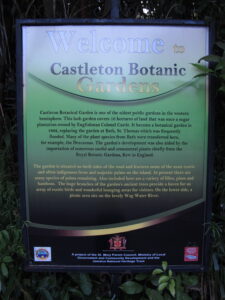 i also visited the legendary Bath Botanical and Castleton botanical gardens. In general both of these gardens were lacking in diversity and poorly signed. However, they are still worth a visit due just to their legendary status and some particularly remarkable trees. The state of disrepair in these gardens inspired the thought of turning the Source farm into one of the premier signed ethnobotanical gardens on the island. i also made contact with the botanist at the Natural History museum Keron Campbell and he agreed to possibly help in our botanical survey work of the Source farm. Paul Williams with the Gleaner newspaper conducted an interview for a prospective article about work going on at the Source farm.
i also visited the legendary Bath Botanical and Castleton botanical gardens. In general both of these gardens were lacking in diversity and poorly signed. However, they are still worth a visit due just to their legendary status and some particularly remarkable trees. The state of disrepair in these gardens inspired the thought of turning the Source farm into one of the premier signed ethnobotanical gardens on the island. i also made contact with the botanist at the Natural History museum Keron Campbell and he agreed to possibly help in our botanical survey work of the Source farm. Paul Williams with the Gleaner newspaper conducted an interview for a prospective article about work going on at the Source farm.
Service and assistance provided included generation of a botanical survey featuring over 100 species of plants as well as an ethnobotanical checklist for plants of Jamaica featuring over 300 species. Type pictures for over 50 local species were taken in an effort towards making the field guide book “Plants of the Source” Nine books covering various aspects of Jamaican/Caribbean ethnobotany were deposited in the Source farm library. A suggested reading list for the ethnobotany of the Caribbean was generated with over 100 resources cited and a digital mostly Caribbean focused ethnobotanical library was shared as well.

i taught one day long class on Botany, Wild Edible Plants, Medicinal Plants and Food as Medicine to five men and five women. We had a brief overview lecture on basic botanical concepts and then did one plant walk each before and after lunch. We finished with the Food as Medicine lecture accompanied by a review of the book resources and various other tools for the further study of ethnobotany by interested participants. A number of the participants already knew quite a few plants. The following day i taught a class on Fermentation to nine men and eight women. The audience included three beekeepers and multiple herbalists as well as Norman Wright, the owner of national tea company Sipacupa/Tops, and Dr. David Picking from the University of the West Indies. The class covered the diversity of different kinds of fermented food products, history of use, benefits, potential business endeavors and basic preparation of Sauerkraut, Vinegar, Dosas and various probiotic beverages such as Jun, Kefir and Kvass.
The land of the Source farm is very beautiful with a ton of potential! The future completion of the conference center is especially exciting and will surely kick it up a notch. Planting of more food forests around the land will provide living examples of Permaculture principles. Availability of water is clearly an issue and must be taken into account when making development decisions.
The plant list will help inform all interested parties as to the diversity of plants in general and useful plants in particular on the land. The library additions will help the effort to continue to compile information about the ethnobotanicals present in Jamaica in general and the Source farm in particular as well as help in the proper identification of species for harvest and signage purposes. Many readily available new alternative crops may be identified through this process. Ultimately an adequately signed botanical garden can bring visitors and revenue in its own right as well as serve as an educational tool for the local community.
Follow-Up
An increase in botanical diversity, especially regarding trees in general and choice edibles and medicinals of all types in particular, is a recommendation. Furthering Oliver’s work in building an on-island database of people who have plant material available as well as creating a list from other locales around the world can help in this regard. Also continuing to graft and trial different varieties of fruit is a good idea. A special plant collection along the lines of the United Plant Savers, Sacred Seed Sanctuaries is another potential project. It is recommended to apply signage to major and remarkable plants incrementally. At first, signs can be made of paper, laminated and applied to suitable posts of locally available material. Later more permanent signs might be nice. There is a granting organization that deals specifically with signage for gardens and I will try to look into this more!
i plan to continue to flesh out the additions to the ethnobotanical plant list for Jamaica. In particular, I would like to add the number of genera and species per family and the number of species per genus as well as more plants and ethnobotanical data especially common names. Other areas for further study and inclusion include plants for bees/honey, various crafts and natural dyes in particular. Ultimately the plan is to also make a similar resource as to one that i have helped construct for Costa Rica. Costa Rica has over three times as many plant species as Jamaica so hopefully, this new task won’t be quite as daunting. The guide will have every plant family and genus for Jamaica and the number of species for each as well. Most importantly a list that is as comprehensive as possible for common names related to each genus and species will be indexed in the back to help researchers and communities in scientific identification when only a common name is known.
Nomi and Dwight Shirley of Source farm sent me a proposal regarding offering an internship at the Source farm through Warren Wilson College. i am an alum of Warren Wilson and also helped design and direct the Ecodorm, manage the garden and was the student representative on the Board of Trustees. i still currently guest lecture in various departments as well as help with activities as diverse as assistance making the Passover dinner, collection and set up of the flowers for the graduation stage and work in the gardens. i will do my best to facilitate a strong connection between Warren Wilson and the Source farm.
It would be great if folks at the Source can follow up with and keep contact with Norman Wright, Dr. David Picking, Keron Campbell and Dr. Ina Vandebroek. Dr. Sylvia Mitchell, Dr. John Rashford and Dr. Susan Leopold may be of assistance as well.
Reflections
The trip overall had a profound effect on me. i like many people have long dreamed about visiting Jamaica. Unlike many people my step-mother is Jamaican, my high school soccer coach was Jamaican and my first email address established in 1998 used the Jamaican vernacular terms italmon. Many dear friends and colleagues have done work in Jamaica over the years as well.
i was so excited to finally be able to visit myself! The plants of Jamaica really beckoned me as a botanist that has been to all 50 of the United States of America and now 25 countries. Of the roughly 3,000 species on the island close to 900 occur nowhere else on Earth! i also love to visit new botanical gardens and was excited to go to some of the oldest in the neotropics where legendary figures like Captain Bligh brought items such as Black pepper, Breadfruit, Cinnamon, Jackfruit, Mangos and Nutmeg to the island.
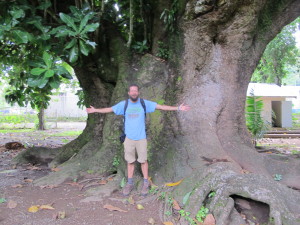
Some stunning plants, in particular, big trees like the Barringtonia in Bath and Cannonball trees at Castleton were remarkable. However, it gave me pause after finding out that this very Barringtonia used to be the tree that people were hung from when sentenced to death! The hot springs in Bath are indeed hot and i had a rather transformational visit there.
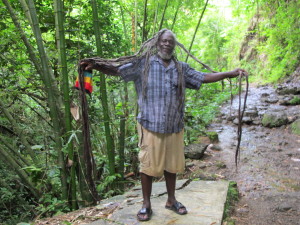
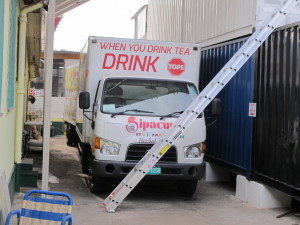 i was inspired to see how many of the wild plants the Sipacupa/Tops tea company were selling commercially. These include Colic Mint (Lippia alba), Guinea Hen Weed (Petiveria alliacea), Spanish Needle (Bidens pilosa) and Blue Vervain (Stachytarpheta jamaicensis). The owner Norman is also working to develop products featuring Medina (Alysicarpus vaginalis) and Jack in a Bush (Chromolaena odorata). He informed Nicola and i that he would be happy to co-pack items that are harvested by the cooperative associated with the Source in his facility. A goal is to come up with a list of viable tea plants including especially novel and wildly abundant types.
i was inspired to see how many of the wild plants the Sipacupa/Tops tea company were selling commercially. These include Colic Mint (Lippia alba), Guinea Hen Weed (Petiveria alliacea), Spanish Needle (Bidens pilosa) and Blue Vervain (Stachytarpheta jamaicensis). The owner Norman is also working to develop products featuring Medina (Alysicarpus vaginalis) and Jack in a Bush (Chromolaena odorata). He informed Nicola and i that he would be happy to co-pack items that are harvested by the cooperative associated with the Source in his facility. A goal is to come up with a list of viable tea plants including especially novel and wildly abundant types.
Overall the folks at the Source Farm and everyone else i met in association with this project were fabulous. i look forward to a continued connection as time goes on and would love to eventually lead trips there through Plants and Healers International in the future!
References for Books brought to the Source library
Adams, C. D. (1971). The Blue Mahoe & Other Bush: An Introduction to Plant Life in Jamaica. McGraw-Hill Far Eastern Publishers.
Austin, S., & Thomas, M. (2009). Common Medicinal Plants of Portland Jamaica (2nd ed.). United States: CIEER, Inc.
Elpel, T. (2013). Botany in a Day: The Patterns Method of Plant Identification. Pony, MT: HOPS Press, LLC.
Henry, M., Harris, Kevin S. (2002). The LMH official dictionary of Jamaican herbs & medicinal plants and their uses. Kingston: LMH Pub.
Honychurch, P. N. (1986). Caribbean Wild Plants and Their Uses. London: Macmillan Caribbean.
Katz, S. E., & Morell, S. F. (2016). Wild Fermentation: The Flavor, Nutrition, and Craft of Live-Culture Foods, 2nd Edition (2nd ed.). Chelsea Green Publishing.
Morton, J. F., & Zallinger, J. (1976). Herbs and spices. New York: Golden Press.
Storer, D. P. (1964). Familiar Trees and Cultivated Plants of Jamaica. Macmillan and Co Ltd.
Wardowski, W. (1998). Fruits of Tropical and Subtropical Origin: Composition, Properties, Uses. (S. Nagy & P. Shaw, Eds.). Lake Alfred, FL: Agscience Inc.
